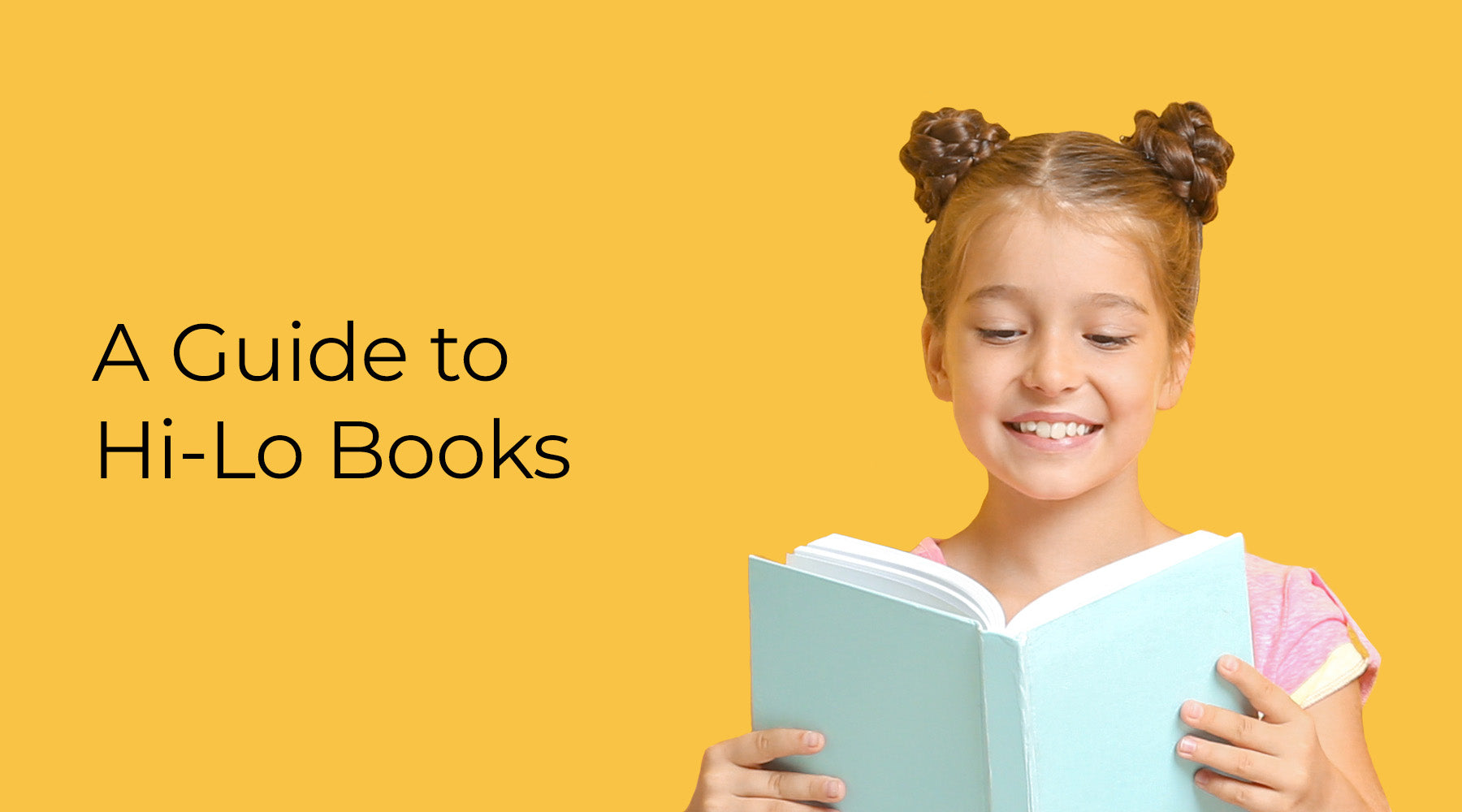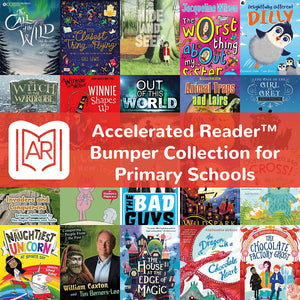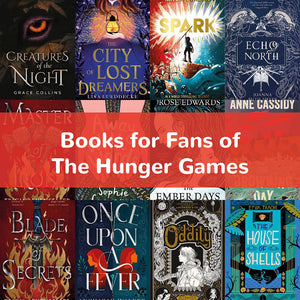
Guide to Hi-Lo Books
Despite the widespread success of phonics, too many pupils still leave primary school unable to read fluently. Making matters worse, reading for pleasure, a proven driver of literacy and language development, has sharply dropped since 2019.
The government plans to build on the success of phonics by equipping teachers with training and resources to guide every child, from early readers to struggling teens, toward becoming confident, fluent readers.
“A third of children leave primary school without fundamental reading, writing and maths skills…the department will commission further training that will be focused specifically on struggling readers in secondary school who are at risk of falling behind.”
Department for Education (February, 2025)
Those statistics highlight the urgent need for schools to provide accessible, age-appropriate, and engaging reading materials that reach struggling and reluctant readers. Hi-lo books (high-interest, low-reading-level) texts offer an evidence-informed solution.
Below is a practical guide explaining what hi-lo books are, how they support learners, and strategies for choosing and using them in school and at home.
What are hi-lo books?
Hi-Lo books = High Interest, Low Reading Level
They are stories or non-fiction texts that are age-appropriate in theme and appeal to older readers but are written at a lower reading level. Key features commonly include:
· Shorter sentences and controlled vocabulary.
· Wider line and word spacing, and clear fonts.
· Supportive illustrations or layout cues.
· Accessible yet age-appropriate themes and topics.
· Shorter stories with lower word counts than typical for the age group.
These design elements help older children who struggle with decoding or fluency engage with content independently, without feeling like the material is too young for them.
Why do hi-lo books matter?
Young people disengage from reading for many different reasons such as low confidence, limited access to books that interest them, or previous struggles with reading fluency.
The right book can change everything.
Finding a well-chosen text can be transformative and offering books that feel relevant and achievable is the first step toward engagement, success, and self-motivation. Hi-lo books for KS2–KS4 students:
- Bridge the gap between skill and interest.
- Provide age-relevant content while reducing cognitive load.
- Foster a sense of achievement, fuelling further reading.
At School Bargain Bookshop, we curate hand-picked hi-lo collections explicitly chosen to appeal to reluctant and struggling readers. Browse:
Hi-Lo Collections for Reluctant or Struggling Readers in Primary Schools
Hi-Lo Collections for Reluctant or Struggling Readers in Secondary Schools
By offering texts students can succeed with, you increase immediate engagement and open the door to reading more complex materials later, building confidence and stamina and helping to close the reading gap.
How do hi-lo books support struggling readers?
- Lower decoding/processing load — freeing students to focus on comprehension and meaning.
- Fluency support — through controlled text, short chapters, and a clean, supportive layout.
- Frequent success — boosting motivation and encouraging more reading.
- Builds reading stamina — supporting the “reading miles” concept in DfE guidance.
“Putting in the ‘reading miles’ allows pupils to practise their reading, building experience with increasingly complex texts, encountering new knowledge, gaining new language, including vocabulary, and developing their fluency.”
The Reading Framework (DfE, July 2023)
How can hi-lo books boost confidence and engage reluctant readers?
- Age-appropriate themes (such as sports, mystery, real-life issues, humour) remove the “babyish” stigma that can shut down engagement for older readers.
- When material matches interests, increased choice encourages ownership and promotes reading for pleasure — shown to raise enjoyment and attainment.
- Diverse representation ensures readers can see themselves in the texts.
“Pupils’ right to choose what they read is crucial for encouraging a love of reading and makes the activity more palatable for reluctant readers. Have a diverse range of books available. School libraries are absolutely vital in offering a healthy selection of great quality, wide-ranging books to every pupil.”
National Literacy Trust (February, 2022)
What key features make hi-lo books suitable for older students with lower reading levels?
- Age-appropriate content — no topics that feel too young. Choose gripping stories, with the look and feel of a “real” book.
- Controlled vocabulary and sentence complexity.
- Short chapters, steady pacing, and a reader-friendly layout (accessible font, increased spacing, short line length) make texts easier to follow, helping children stay engaged and confident.
- Genre variety (fiction, non-fiction, graphic novels, sports, humour) so students can follow interests.
- Dyslexia-friendly features or specialist fonts.
- Clear reading level — e.g. AR, Lexile, or reading age.
- Vocabulary pages or end-of-book questions, to support comprehension.
- Does your selection allow for progression, helping readers build confidence and move up in challenge without losing interest.
Can hi-lo books support students with English as an additional language (EAL)?
Yes. Hi-lo books provide comprehensible, engaging language input while matching cultural and age interests. Pairing hi-lo texts with oral discussion, visual supports and bilingual glossaries amplifies their impact for EAL learners.
In what ways do hi-lo books assist students with dyslexia?
Dyslexia-friendly hi-lo books, featuring clear layouts and supportive design, reduce visual and processing burdens and boost reading confidence. Publishers such as Badger Learning and Barrington Stoke produce specially edited, dyslexia-aware titles that are widely used in schools. When combined with phonics instruction and structured support, hi-lo books play a key role in building reading confidence and fluency.
Browse Hi-Lo for Primary
Browse Hi-Lo for Secondary
What are the benefits of incorporating hi-lo books into classroom and school libraries?
- Expands choice for students who otherwise avoid books beyond their decoding level.
- Supports structured fluency practice and repeated reading of accessible texts.
- Supports dyslexic and SEN pupils who require accessible and age-appropriate texts to progress.
- Encourages reading for pleasure, which is linked to broader attainment gains.
View our full listing of greatly discounted hi-lo collections, Accelerated Reader™ sets, and more at School Bargain Bookshop.
Can hi-lo books be used at home?
Absolutely. Hi-lo books can make shared and independent reading more successful and pleasurable at home. Recommend titles that match a child’s interests and reading level, and encourage short, achievable reading goals to build confidence, especially important for students with dyslexia or SEND.
Stock up on Hi-Lo Books for Primary and Hi-Lo Books for Secondary, perfect for home reading.
Read our Guide to Encouraging Reading for Pleasure at Home for further strategies and ideas.
Where can I find the best-value hi-lo book series and book collections?
Schools and libraries can find the best-value hi-lo book series and collections at School Bargain Bookshop. We are a trusted bargain book suppliers that specialise in affordable resources for education. With over 15 years of experience, School Bargain Bookshop has become a go-to provider of exceptional-value book collections for UK and international schools. Regularly refreshing your library with discounted collections keeps reading material new, and engaging, helping sustain students’ interest in reading. By selecting discounted hi-lo titles that align with class interests and needs, schools can restock efficiently and cost-effectively — expanding their libraries while staying within budget.
Consider Accelerated Reader™ (AR books) for matching and tracking children’s reading progress and promoting reading for pleasure. Many hi-lo titles have been quizzed and levelled by Renaissance Learning for AR.
To maximise budget and impact:
- Buy mixed packs (fiction + non-fiction)
- Order multiple copies of high-demand titles
- Refresh collections regularly to keep student interest alive
- Choose hi-lo titles aligned to interests and class needs
We recommend these key category pages for bulk and discounted sets:
· Hi-Lo Book Collections for Key Stage 2
· Hi-Lo Book Collections for Key Stage 3
· Hi-Lo Book Collections for Key Stage 4
What practical steps can school’s take to introduce hi-lo books?
We recommend this five-step plan:
- Audit need — identify readers’ age vs reading level and target KS2/KS3/KS4 cohorts (use reading age data or AR levels).
- Label clearly — add reading level, AR data and interest age on spine or inside cover labels so staff and pupils can match quickly.
- Pair with oracy and writing tasks — Integrate into lessons by using short, repeatable extracts for fluency practice, vocabulary teaching, paired reading, and writing models.
- Run small-group sessions — guided reading, buddy reading and book clubs for reluctant readers.
- Link with English Hub support — if you’re in England, contact your local English Hub for details of the CPD, support materials, and funding available to you.
How can the impact of using hi-lo books be measured?
Track progress via:
- Reading stamina and pupil interviews to monitor attitudes to reading and measure engagement gains.
- AR / quiz results.
- Fluency checks (e.g. timed readings).
- Vocabulary growth.
- Pupil feedback and attitude surveys
Final note
For many learners, reading feels like a daily uphill climb — especially for disengaged or struggling readers. In many cases, reluctant readers simply haven’t found the right book yet. That’s where hi-lo books come in.
Designed with high-interest content and accessible reading levels, hi-lo books are powerful tools for re-engaging learners and building confidence.
While they don’t replace targeted intervention — such as structured phonics, fluency programmes, or specialist literacy teaching — they offer an ideal complement. Hi-lo books provide age-appropriate, motivating material that helps readers build fluency, expand vocabulary, and grow in confidence.
Support every learner’s reading journey. Whether in the classroom or at home, hi-lo books create a bridge between frustration and fluency — making reading accessible, engaging, and empowering for all.
Read Next: Discover how to foster a lifelong love of reading and ensure academic success for all in our Guide to Supporting Struggling & Reluctant Reader



